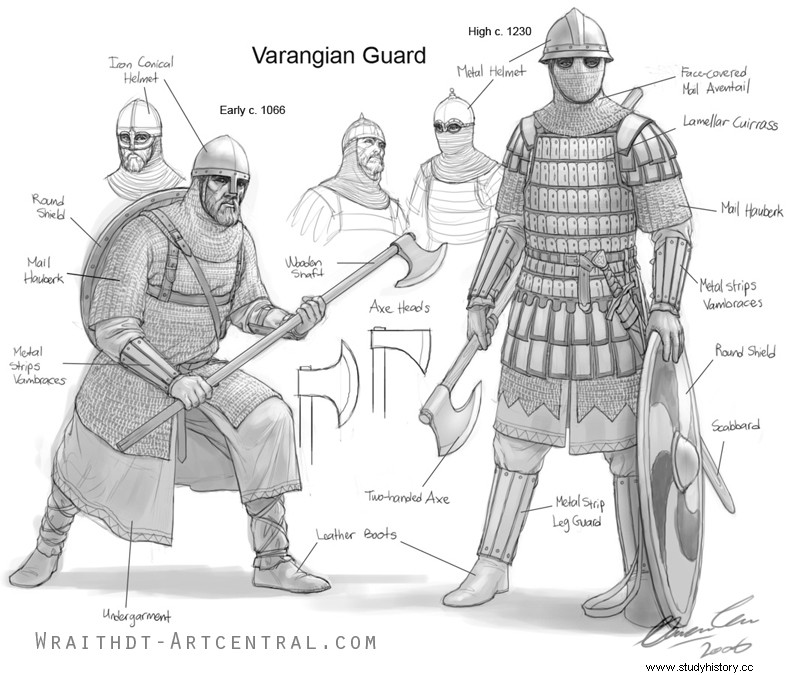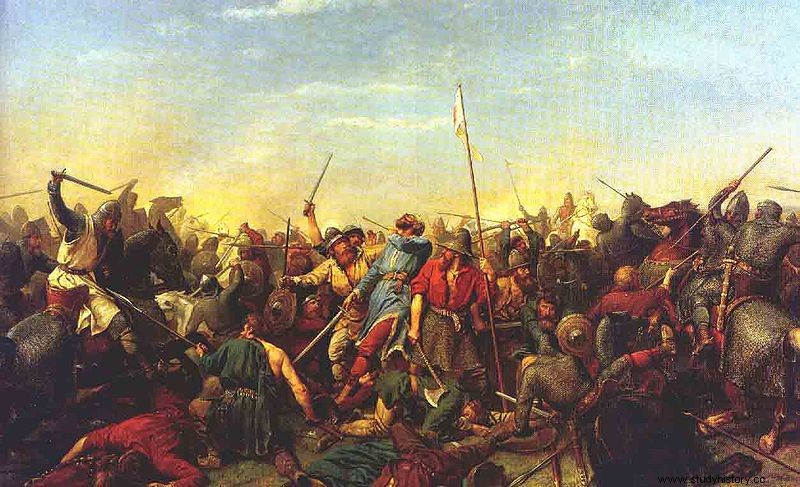In 1029, King Olaf II of Norway returned from exile to recover the lost throne against the Danes. The following year, at the battle of Stiklestad , he was mortally wounded. Along with Olaf, his brother Harald Hardrada fought. that he was able to flee with a group of faithful. They were hired as mercenaries in the service of Yaroslav I the Wise , monarch of the kyiv Rus state (territory of what is now Ukraine, Belarus, Poland, the Baltic Republics and part of Russia), where they gained great prestige that, a little later, served them to form part of the Varega Guard of the Byzantine Empire.

Varangian Guard
In the service of the empire he fought in the campaigns of Sicily , where, thanks to their ingenuity, they managed to take a city that seemed impregnable. To the thickness and height of the fortifications it was necessary to add that they had natural wells and, in addition, that they had supplies to spend several months of siege. Harald spent several days looking for a gap, weak point or loophole through which he could attack... nothing at all . What he did realize is that, during every day that he was studying that fortress, hundreds of sparrows flew into the forest to find food for their young and then returned to their nests inside the city. He ordered his soldiers to capture as many birds as they could but only those that left the city. They tied small pieces of wood to their legs, which they had previously impregnated with pitch and sulfur, and set them on fire. The frightened birds quickly flew to their nests. As most of these nests were located on the ledges of houses built of wood, straw and other highly flammable elements, hundreds of small fires began to devour the city. The inhabitants of the city fled from the fire and begged for mercy. Harald took the city and spared their lives .

Harald's death by an arrow at Stamford Bridge
These triumphs led to the recognition of the Byzantine emperor Romano III , but Harald believed that the time had come to return to Norway and claim the throne from him. The emperor did not allow him to leave and Harald, with part of the Varangian Guard, fled to the Nordic lands. In 1047, he was crowned Harald III of Norway . He perished at the battle of Stamford Bridge (1066) when he was trying to invade England.
Extracted from the book «I never learned the list of the Gothic kings «
